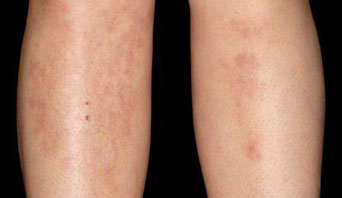Though you can surely rely on your dermatologist in terms of taking care of your nails, there are some specific things your dermatologist might not tell you in terms of keeping your nails healthy. Though there are certain useful tips that must be given by the dermatologist in order to help you in keeping the good health of your nails, sometimes he/she may forget to actually mention those to you. Below are some of those things that your dermatologist might not prefer to tell you:
Clipping of Finger Nails
Your dermatologist might not suggest you to clip your nails by yourselves. Too many times it has been observed that self clipping of nails results in uneven shapes and often the result is too short nails. You must keep in mind that though your dermatologist might not insist you to get your nail clipped by others, you must try it whenever it is possible.
Soaking Your Fingers In Warm Water
Moreover, quite interestingly your dermatologist might not tell you not to soak your fingers in warm water before getting into a manicure. Though it may feel nice to soak one’s hands in warm water before getting into the manicure process; water soaking actually bloats the nails, and this bloating results in uneven manicure patterns sometimes. This also prevents any type of nail fungus. Dry manicures last longer but this truth might not be revealed by your dermatologist while you attend him/her for consultation regarding how to keep you nails healthy, fit and fine.
Manicuring Basics
Your dermatologist might also forget to tell you that prior to getting into manicuring you must make sure that your hands are smooth and not hard or rigid. Stiff hands actually are enemies to good nails. If the hand is stiff then it can become tough for an individual to experience a smooth manicuring and this can lead to the decline in the condition of one’s nails. Hence, keeping your hand smooth is the key to success in manicure but this little tip might not be given by your dermatologist.
Excessive Hand Washing is a Strict No!
Hand washing is a good habit and your dermatologist should suggest you to continue with the habit as long as possible. But at the meantime your dermatologist might not tell you the negative side of excessive hand washing as she might think that such point is quite common to be known by everyone and hence, it is better not to waste the consultation time by repeating the same principle. But what you must remember is that; you should not indulge in excessive hand washing as it might make your hands and your nails not only hard and rigid but might make them prone to bacterial growths and fungus intrusions.
Exfoliate At Home
Finally, your dermatologist might not tell you that it is not always necessary to go to your manicurist for exfoliating your cuticles on a regular basis. You must try to exfoliate your cuticles on a regular basis by yourself. It is quite an easy process to indulge in. If you have dry skin then you must just rub your nails with a wash cloth in the shower. Pushing back the cloth and rubbing the cloth over the fingers in a circular motion would eventually exfoliate the cuticles. Moreover, the moist air in the shower will make the cuticles softer and easier for you to clean. But your dermatologist might not tell you this little but expensive secret.



